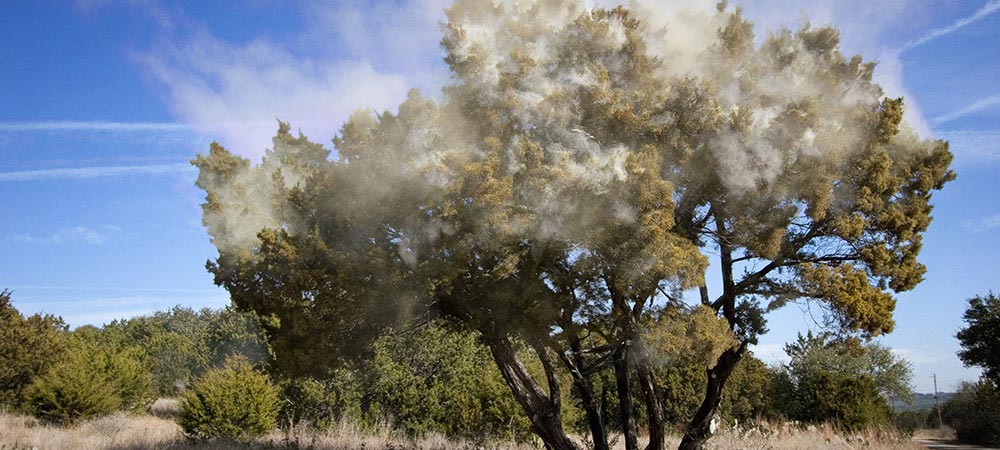Here Comes Cedar Fever (amidst COVID-19)

Every year, winter brings a variety of viruses, and 2020 brought a new one that is concerning to most – COVID-19. While people tend to disregard allergy as a cause of winter illness because most outdoor allergens are minimal, there’s an exception in the south. It’s called Cedar Fever, and it can cause some pretty severe symptoms, too.
Read on to learn more about cedar fever, its symptoms, how its symptoms compare to COVID-19, and tips for keeping allergy symptoms low.
Cedar fever symptoms
Cedar fever is the nickname for an allergy to mountain cedar trees, which are primarily found in Texas, but can survive as far north as Arkansas, Missouri, and Oklahoma. Pollination is from December to March, with the key time being right about now.
Those with an allergy to mountain cedar can experience pretty severe symptoms as the trees spread massive amounts of pollen – so much so that people often mistake released pollen for clouds or smoke.
For those allergic to mountain cedar trees, symptoms occur after inhaling the pollen and can include:
- Sneezing fits
- Runny nose
- Itchy, burning and watery eyes
- Headache
- Itchy throat
- Exhaustion
How symptoms compare to COVID-19
Like with other allergies, some of the symptoms of cedar fever and COVID-19 can overlap, and the unknown can be unsettling. What sets them apart?
- Contrary to its name, cedar fever does NOT cause a fever. That’s one of the big differentiators between COVID-19 and allergy.
- Itchiness is not a common symptom of COVID-19. With cedar fever, itching is common in the eyes, nose, throat, or even the ears.
- Difficulty breathing and shortness of breath are uncommon with allergic rhinitis. But, those with allergic asthma may experience flare-ups when exposed to mountain cedar.
If you’re experiencing any symptoms, follow your local guidelines and CDC recommendations for testing to determine the cause of your sickness.
Allergy control measures
To avoid symptoms from cedar fever, there are a few things you can do:
- Launder your clothes in high heat after spending extended time outside.
- Leave shoes worn outside in the garage or entryway to avoid tracking pollen indoors. Vacuum carpets with a HEPA filter.
- Wear a mask to protect yourself from COVID-19 which may help you avoid inhaling pollen, too.
It’s important to continue taking your allergy and asthma medications and treatment to avoid symptoms from cedar fever, but also to keep your respiratory health at its best in case of exposure to COVID-19. COVID-19 can have a large impact on the respiratory system and can exacerbate otherwise controlled symptoms.
During a time of social distancing, many people are looking for alternatives to weekly office visits for traditional allergy treatment. If you are interested in a treatment that gets to the cause of your underlying allergy and can safely be taken at home, consider finding a provider near you that offers custom allergy drop (sublingual) immunotherapy.
By Taylor Pasell, Allergychoices


